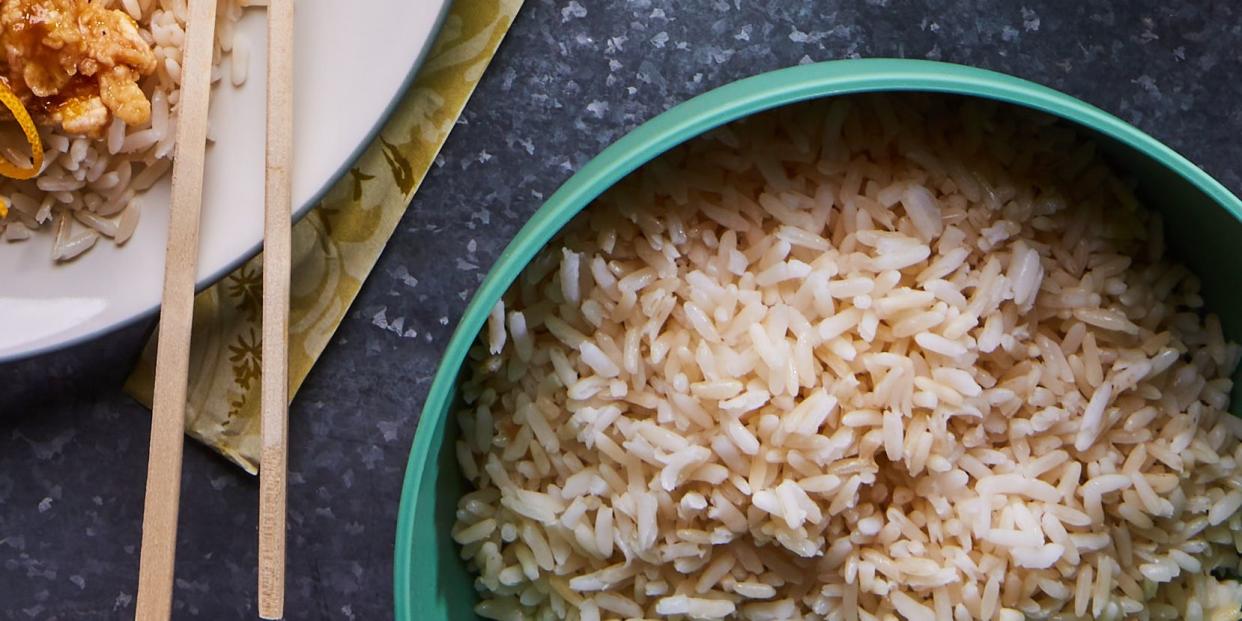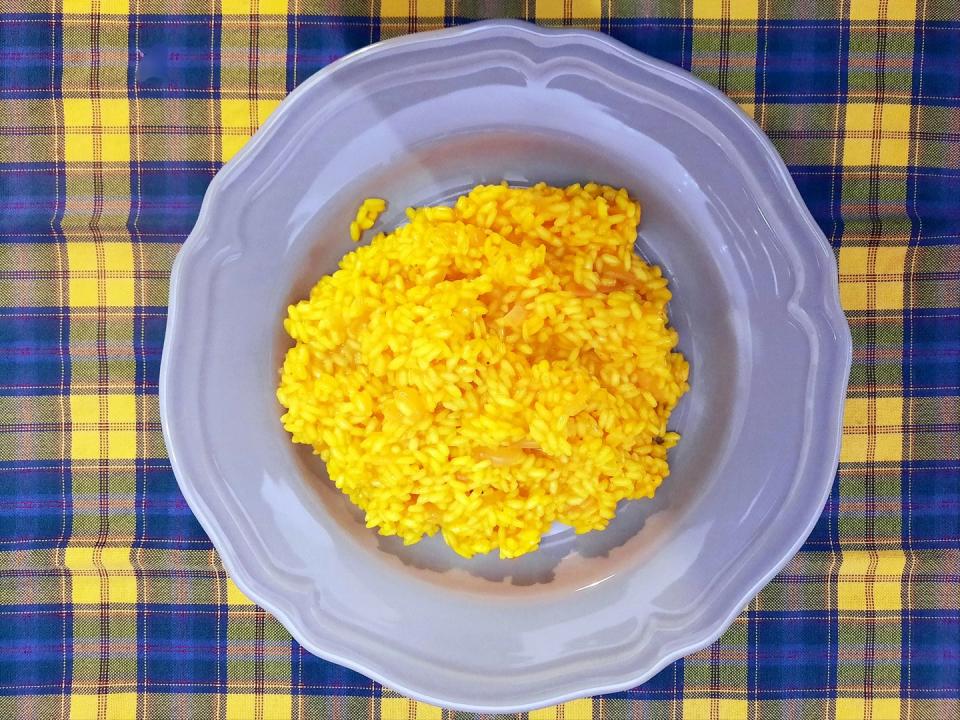How to Cook Rice: The Best, Easiest Methods

Even if you're not part of the majority of the world's population that eats rice daily, chances are high that you've eaten the staple ingredient in recent memory. And if you bothered to click on and start reading an article on how to cook it, chances are very high that you liked it!
Unfortunately, while rice may seem to be a simple, even straightforward food, it's anything but. There are, according to some accounts, over 120,000 varieties of rice in the world, and rice is cooked (and eaten) in dozens, if not hundreds of different ways, depending on the kind of rice you're cooking, and the dish it's going in. So American style Chinese takeout rice is much different than rice pilaf, or rice pudding, or sushi rice, for instance.
Here, we'll try (as quickly as possible) to cover the most popular varieties of rice available, and some basic methods of cooking them, so you can scroll around and find the rice you have, and the method of cooking that works best for you as well as a few recipes in case you're looking for ideas.
Pair your rice with some of these delicious salmon recipes.
What Kinds of Rice Are There?
In the U.S., in general, shoppers begin by choosing among three main groups of rice: white rices, brown rices, and wild rice. Wild rice, the simplest and smallest group, is not actually a rice at all, but is a separate species of grain, native to the U.S., that is cooked and eaten in a similar way. Its main characteristic, besides being much more colorful, and typically longer and thinner than rice, is that it takes a little longer to cook. As it is a traditional food of some Native American tribes, it is often a popular side dish at Thanksgiving.

Make the recipe: Wild Rice and Cider Cranberry Pilaf
Nearly every other rice on the market is available as either a brown or a white rice. The difference between the two isn't the variety, but how it's processed. White rice is simply kernels of brown rice with the brown outer layer (called the bran) removed.
White rice is much more popular than brown rice because, with the bran removed, it's easier to cook, less chewy, and has a milder flavor. However, the bran contains a lot of nutrition, as well as fiber, and so people more concerned about health, tend to buy and eat more brown rice. There are also varieties of rice sold as red or black rice. These specialty rices, like brown rice, still have their bran intact, which gives the distinctive color.
White and brown rice can be grouped into two big categories: long grain, and short grain. (Short grain rice, as a category, includes many medium grain varieties that are cooked or eaten in similar ways.) The main differences between these categories is texture. Long grain rices, when cooked, tend to be dryer and fluffier, while short grain rices tend to be stickier.
Long grain rices such as basmati rice or jasmine rice tend to be used in dishes such as Indian or Thai curries, as well as in Mexican cuisine, while medium and short grain rices tend to be used in East Asian cuisines, as well as in American-style Chinese food, Italian risottos, and in sushi.
What's a Basic Stovetop Method for Cooking Rice?
The simplest method to cook most rice is in a pot on the stove. You can either cook it using a ratio of rice to water, or you can use the knuckle or pasta methods (both described below).
If using a ratio of water to rice, it's worth noting that there is a lot of room for flexibility. As a dried grain, rice can absorb a wide range of water and still taste delicious. And while most packages of rice have reliable ratios for their variety, if you're unsure, these general ratios should work:
For long grain rice: 1 cup rice to between 1 1/3 and 1 3/4 cups water
For short grain rice: 1 cup rice to between 1 cup and 1 1/4 cups water
For brown rice: 1 cup rice to 1 3/4 or 2 cups water
Rinse rice thoroughly, then bring rice and water to a boil. Reduce heat to low, cover, and allow to cook until liquid is absorbed (This can be 15-20 minutes for white rice, and up to 45 minutes for brown rice.) Remove from heat, fluff with a fork, then cover and let stand about 5 minutes.

Make the recipe: Cheesy Rice
How to Cook Rice — The Knuckle Method
If you don't have measuring cups handy — or want to cook an odd amount of rice, and don't want to bother doing math — there's a simple method of cooking white rice that almost always works.
The method is this: After rinsing your rice, put it in the bottom of a pot or rice cooker. Put one fingertip (adult, human, clean, and preferably yours) gently onto the top of the rice, pointing down, and then add water until the level reaches your first knuckle.
You've now got the right ratio of rice to water, and can cook it as you see fit! This works the same whether you're using a big pot or a small saucepan, or a rice cooker. It works whether you're using long grain rice, or short grain rice — though it's particularly effective with short grain varieties.

Make the recipe: Yellow Rice
How to Cook Rice — The Pasta Method
Another "no measure" method of cooking rice, (one that tends to work better with long-grained varieties such as basmati rice), is the "pasta" method. As you might imagine, this method is very similar to cooking pasta. You'll need a large pot of salted water and a colander or mesh strainer fine enough to keep the grains from falling through.
Bring a large pot of well salted water to a boil. (The salt keeps flavors and nutrients from leeching out, which isn't a problem when the rice is absorbing all the water.) Add the rice, lower the heat to a high simmer, and cook, uncovered, tasting grains occasionally, until the rice is just cooked and no longer crunchy. You'll want to start tasting white rice at around 7-8 minutes and start tasting brown rice at around 25 minutes.
When it's ready, drain well and serve!

Make the recipe: The Best Easy Rice Pilaf
How to Cook Rice in a Rice Cooker
If you're eating rice every week (or day), you may want to invest in a rice cooker. They're inexpensive, easy to use, and though they're not necessarily as fast as stovetop cooking, they are largely hands-off, so you don't need to worry about your rice overcooking, or undercooking.
Though there are dozens of different models, and some rice cookers come with many features, the simplest rice cookers have a basic on-off button, and that's it. And yet, you can cook nearly any kind of rice in them, as well as many other grains, from steel cut oats, to bulgur, or millet. So how do they work?
A rice cooker works by sensing when all the water is fully absorbed. While the rice is cooking in water, it has to stay at the temperature of boiling water — 212°F. After the water is absorbed, the temperature in the rice cooker begins to increase, and the cooker automatically shuts off. It rests for a few minutes to let the liquid fully absorb, and then beeps to let you know the rice is done. Genius, right?
Though every rice cooker has its own recommended ratios of water to rice (and many bags of rice come with recommended rice cooker water ratios), you will likely find that the general ranges above, in the basic stovetop method section, will also work for you.

Have leftover rice? Try this recipe: Fried Rice
Do I Need to Rinse Rice?
Technically, you don't need to rinse rice. Many people don't, and you will end up with edible cooked rice if you skip that step. But almost every qualified cook will advise you to rinse most kinds of rice before cooking. (Though not all: See the section on arborio rice, below.)
Why? Rinsing isn't just about cleaning dirt or debris off the grains. (Though it's also about that. Who knows where that rice was, before it ended up in a bag on the shelf of your grocery store?)
It's about rinsing off the starch that clings to the outside of the rice. This is not an issue with bran-covered rice, like brown rice. But with white rice, that starch often adds an unwanted texture and stickiness — even to short grained rice, which is supposed to be a little sticky.
To rinse rice, simply put it in a bowl and add about double the amount of water, then swirl it around. The water should immediately become cloudy. Drain off the water, and then repeat until the water remains clear.
Do I Need to Soak Rice?
Occasionally a recipe, rice package, or cook may instruct you to soak your rice before cooking it, the idea being that soaked rice tastes better and takes less time to cook.
While we're skeptical that soaking saves much in the way of time (most places say you need to soak rice for at least half an hour, and that's already longer than many rices take to cook), soaking can achieve two results.
First, because aromatic rices lose more of their flavor the longer they cook, the shorter cooking time can preserve more of the aroma in a basmati or jasmine rice. And some people prefer the texture of the pre-soaked rice, which tastes slightly different, as the starches have had some time to soften before cooking.
So, while it's not necessary, if you want to try it, you certainly won't do any harm.
How to Cook Rice for Risotto
Arborio rice is a short grain rice with a high starch content that is grown near the town of Arborio, in Piedmont, Italy. It is used primarily, in America anyway, to make risotto. While arborio rice is the most widely used variety, there are other high-starch rices that will also make a very good risotto, including Carnaroli and Vialone Nano. But the starchiness is what makes the risotto taste so creamy — and it's why you should never rinse your rice before making risotto.
Because of the high starch content, risotto famously needs to be stirred, to prevent it from congealing into a thick, glutinous mass. While this may seem to be a hassle, the effort turns a relatively inexpensive ingredient into an incredibly luxurious dinner.
And because you're cooking the rice uncovered, allowing lots of liquid to evaporate, risotto recipes often calls for a lot more liquid — up to four cups per cup of rice — than you'll find in the ratios above. Risotto is typically cooked in some combination of stock and wine, as opposed to simply water, as well. For an excellent recipe, try the our Corn and Ham risotto with Cheddar cheese, below.
Make the recipe: Corn-and-Ham Risotto
You Might Also Like

